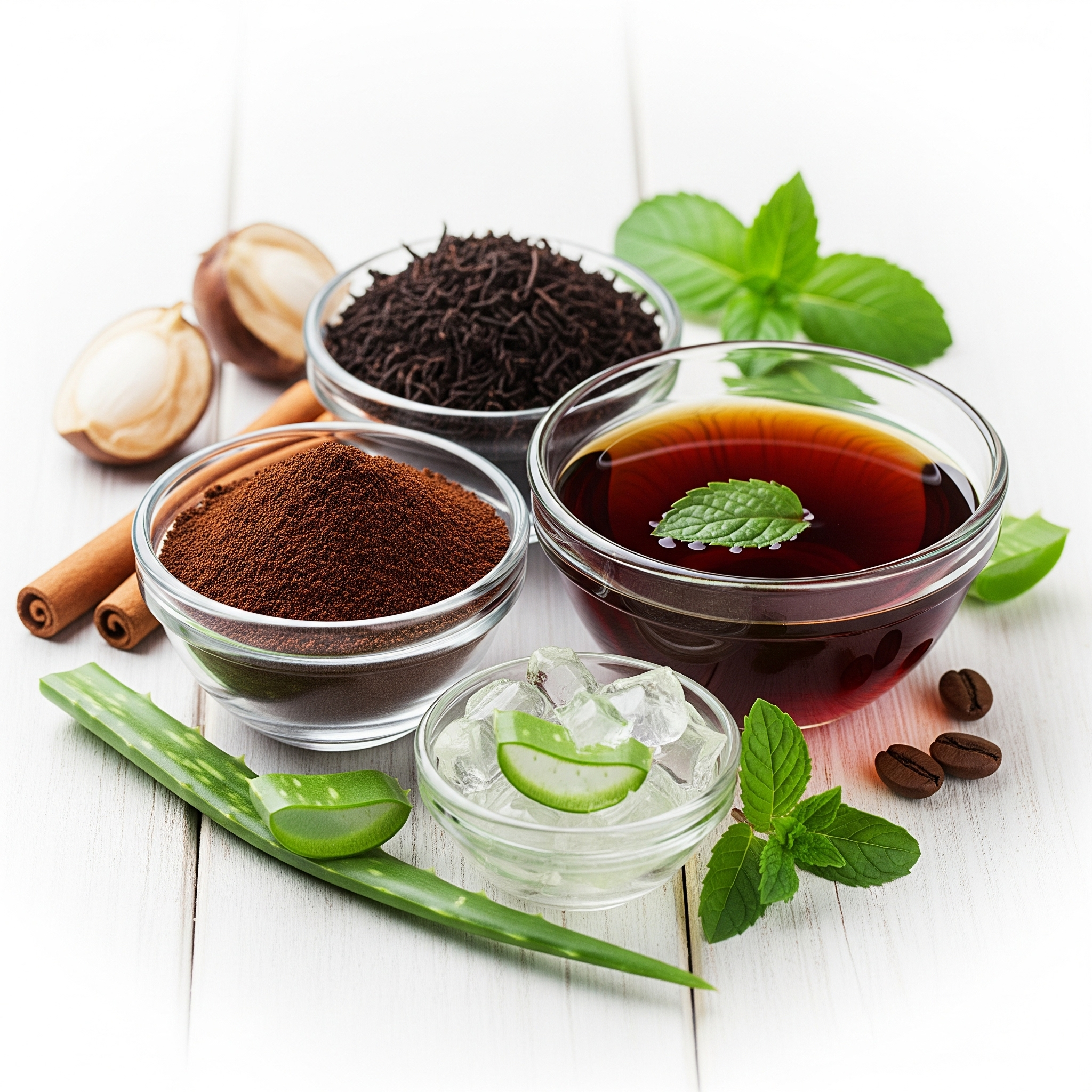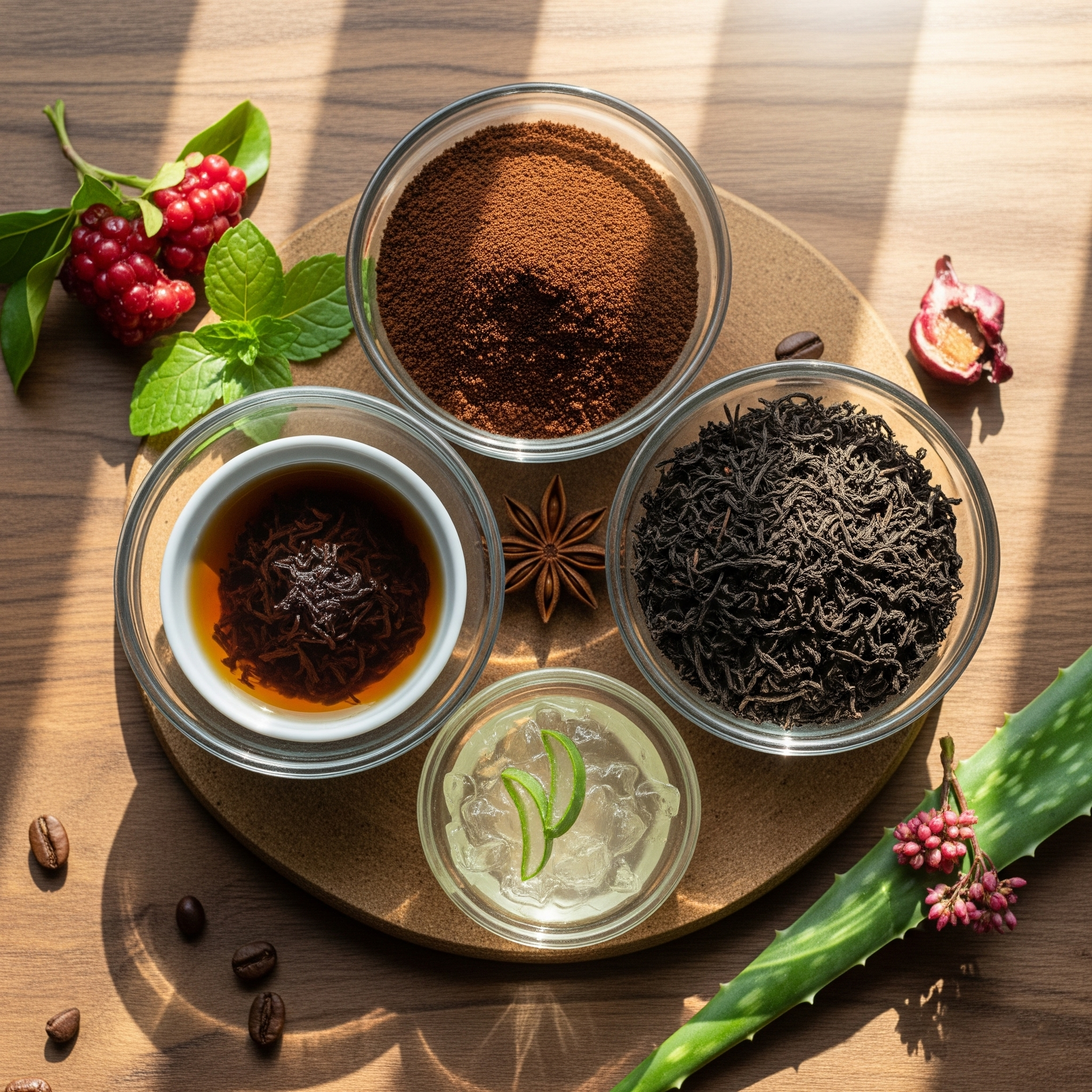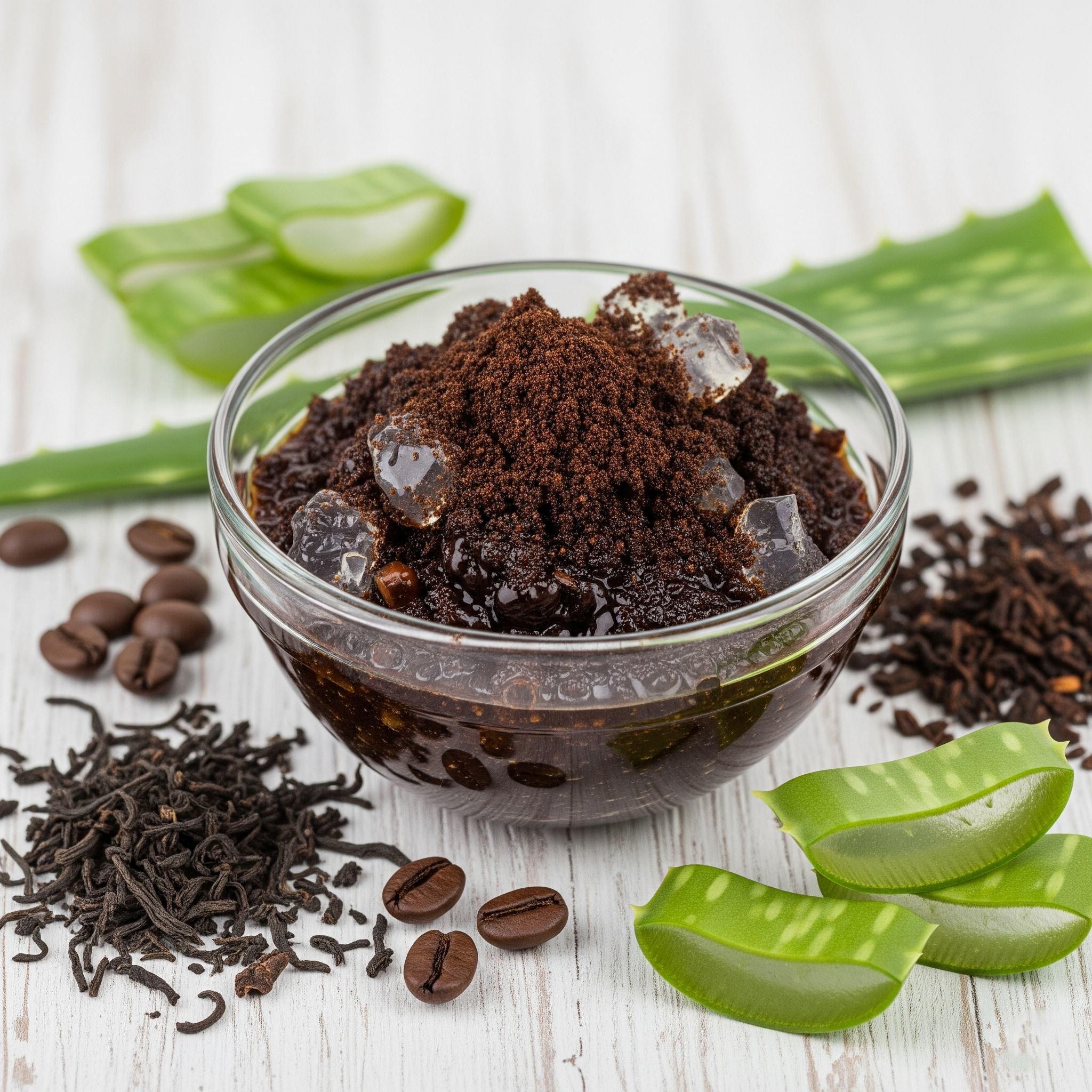Say goodbye to chemical hair dyes with this natural coffee-based alternative
Going grey is a natural part of life—but that doesn’t mean you have to reach for a bottle of chemical dye every time a silver strand appears. If you’re concerned about the long-term damage of synthetic dyes and are searching for a healthier alternative, a DIY coffee hair dye may be exactly what you need.
This all-natural blend made from coffee powder, black tea, and aloe vera gel not only darkens grey hair gradually, but also nourishes and conditions your scalp and strands in the process. It’s safe, budget-friendly, and effective—all while being gentle on sensitive skin.

In this guide, we’ll explore how to make your own coffee hair dye at home, the science behind its effectiveness, and the additional hair health benefits that come from using these plant-based ingredients.
Why switch to a natural hair dye?
1. Conventional dyes come with risks
Most commercial hair dyes are loaded with harsh chemicals like ammonia, parabens, and sulfates. While they offer quick, dramatic results, they can also irritate the scalp, strip your hair of its natural oils, and cause long-term damage. For those with sensitive skin or allergies, the effects can be even more severe—itching, redness, or even hair breakage.
2. Natural solutions nourish while they color
A homemade coffee hair dye is free from synthetic chemicals, making it ideal for people who want a gentler approach to coloring. Unlike chemical dyes that work by lifting and depositing pigment into the hair shaft, natural dyes coat the outer layer, gradually darkening grey strands while preserving the health of your hair.
3. Budget-friendly and easy to make
The ingredients—coffee, tea, and aloe vera—are widely available and inexpensive. With minimal effort and preparation, you can enjoy salon-like results at home without breaking the bank.
The key ingredients and why they work
Let’s take a closer look at how each natural ingredient plays a vital role in darkening your hair and promoting healthier strands.
Coffee powder: more than just your morning brew
Coffee contains natural coloring compounds that help stain grey hair over time, giving it a deeper, richer shade. The caffeine content also stimulates blood circulation in the scalp, promoting better nutrient delivery to the hair follicles.
Benefits of coffee for hair:
-
Gradually darkens grey and white hair
-
Adds a natural shine and vibrancy to dull strands
-
Stimulates the scalp to encourage hair growth
-
Reduces dryness and dandruff with consistent use
Coffee also acts as a mild exfoliant when massaged into the scalp, helping to remove dead skin cells and unclog hair follicles.
Black tea: the secret weapon against silver strands
Black tea is rich in tannins—natural compounds that help stain the hair and restore color depth to greying strands. When used regularly, it works similarly to coffee by deepening your natural hair tone over time.
Hair benefits of black tea:
-
Enhances the natural pigment of your hair
-
Reduces hair shedding by strengthening roots
-
Soothes an irritated or inflamed scalp
-
Contains antioxidants that protect hair from environmental stress
Together, coffee and black tea create a dual-action color blend that also strengthens your hair and improves scalp health.
Aloe vera gel: hydration and healing in one
Aloe vera has long been used to treat dry, damaged hair and irritated scalps. When included in this natural hair dye, it serves as a conditioning agent, locking in moisture and adding softness to the strands.
Benefits of aloe vera for hair:
-
Moisturizes dry, brittle hair
-
Adds natural shine and softness
-
Prevents dandruff and soothes itching
-
Promotes a balanced scalp pH for healthy hair growth
Aloe vera also enhances the spreadability of the dye, ensuring even coverage without stickiness.
How to make your own natural coffee hair dye
This recipe is quick, easy, and requires only a few steps. Here’s what you’ll need to get started.

Ingredients:
-
2 tablespoons ground coffee (organic or instant)
-
1 cup strong black tea (brewed and cooled)
-
2 tablespoons aloe vera gel (fresh or store-bought, without added chemicals)
Instructions:
-
Brew the tea: Steep 1 tablespoon of black tea leaves (or 2 tea bags) in hot water for 5–10 minutes. Let the tea cool completely.
-
Mix the dye base: In a bowl, combine the cooled tea with coffee powder. Stir well until it becomes a thick paste.
-
Add aloe vera: Incorporate the aloe vera gel into the mixture, blending until smooth and creamy.
-
Apply to hair: Wearing gloves, apply the mixture to clean, dry hair. Focus on areas with visible grey.
-
Let it set: Cover your hair with a shower cap and let the dye sit for about one hour.
-
Rinse and condition: Wash your hair with a gentle, sulfate-free shampoo. Let it air-dry naturally.
Optional tip:
Add a teaspoon of coconut oil or castor oil to the dye for added nourishment and shine.

What to expect: results and frequency of use
Natural hair dyes work differently from chemical products. Instead of instant results, the color builds gradually. For best results:
-
Initial application: The first treatment may slightly darken grey hair and improve shine.
-
Visible results: Expect more noticeable changes after 3–4 weekly applications.
-
Maintenance: Apply once a week to maintain color depth and manage new greys.
Because this dye is non-toxic and gentle, frequent use won’t harm your hair—in fact, it only gets stronger and healthier with time.
Long-term benefits of using coffee hair dye
✅ Safer for sensitive scalps
No ammonia, no burning, no harsh residue—this dye is ideal for people prone to allergies or skin reactions.
✅ Deep conditioning with every use
Unlike chemical dyes that strip your hair, this formula moisturizes and strengthens each time you use it.
✅ Improves scalp health
Caffeine and tea tannins stimulate circulation, while aloe soothes inflammation and restores balance to the scalp.
✅ Enhances hair’s natural shine
Say goodbye to dry, lifeless hair. This blend brings out your hair’s natural radiance and softness.
How to maintain healthy, dyed hair naturally
Even when using natural products, maintaining healthy hair requires good habits. Here are some tips:
1. Avoid frequent heat styling
Heat can fade color and weaken hair. Use tools sparingly, and always apply a heat protectant.
2. Don’t overwash
Limit shampooing to 2–3 times a week. Use a gentle, color-safe shampoo to preserve pigment and moisture.
3. Protect from sun exposure
UV rays can lighten hair color. Wear a hat or apply a leave-in with UV protection when spending time outdoors.
4. Use natural hair masks
Weekly hair masks made with yogurt, banana, or egg can further nourish your strands and support color retention.
Why choose this DIY dye over store-bought options?
-
No toxic chemicals – Safe for you and the environment
-
Cost-effective – Uses pantry staples you already own
-
Customizable – Adjust ingredients to suit your hair type
-
Nourishing – Acts as both color and treatment in one
Store-bought dyes may give fast results but can lead to dryness, scalp sensitivity, and long-term damage. This natural method supports overall hair wellness.
Can you reverse grey hair naturally?
While there is no guaranteed way to reverse greying permanently (as it is often determined by genetics and aging), natural dyes like this one can effectively cover grey strands and delay the appearance of new ones by maintaining hair health.
Regular use of nutrient-rich ingredients, stress management, and a diet rich in antioxidants may also help slow the greying process over time.
Final thoughts: embrace natural color, the healthy way
Choosing a natural method to cover grey hair is about more than aesthetics—it’s a step toward healthier hair and a gentler beauty routine. By using a blend of coffee, black tea, and aloe vera, you can achieve darker, glossier, and more vibrant hair without resorting to harsh chemicals.
This DIY hair dye is easy to make, cost-effective, and offers holistic benefits that go beyond color. Whether you’re looking to touch up a few greys or transition to an all-natural haircare routine, this remedy gives you the control, comfort, and confidence to do so—naturally.
